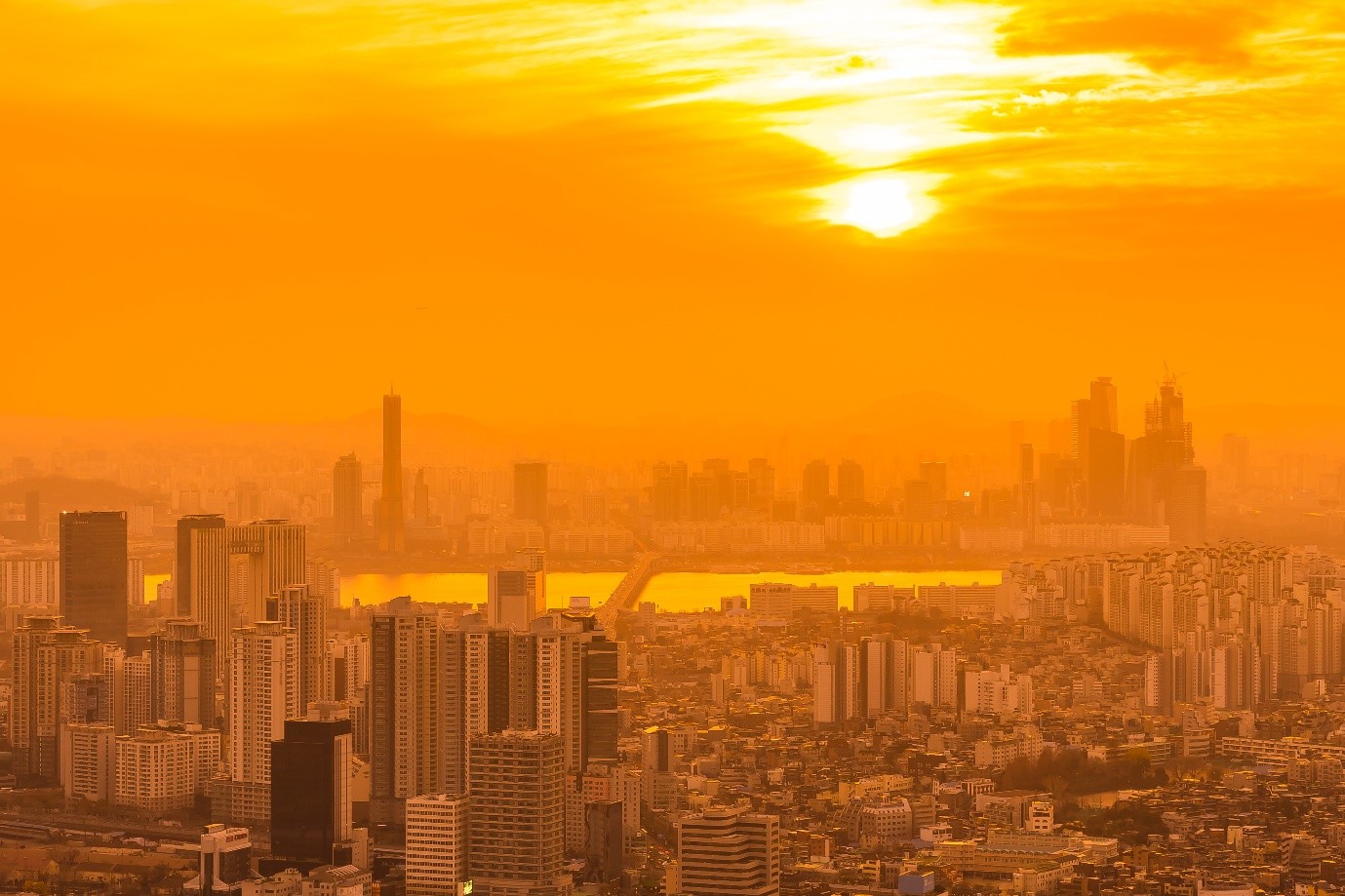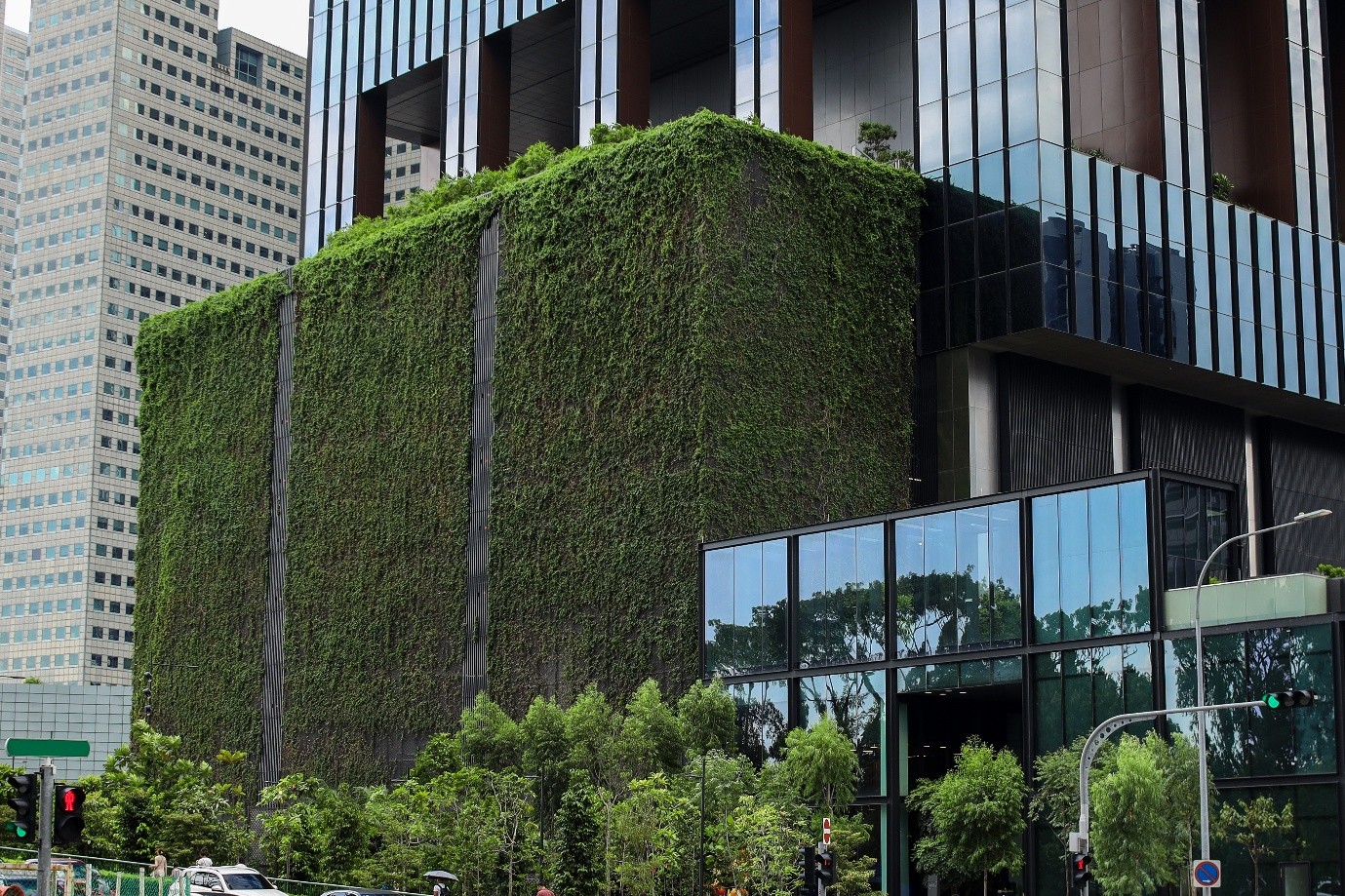
Urbanisation: Urban Heat Island Effect
- Rapid urbanization intensifies the Urban Heat Island effect, highlighting the loss of natural cooling services once provided by forests.
- Sustainable infrastructure must go beyond green materials to include community-conscious design, such as green walls, that align with UN SDG 9 and mitigate ESG risks.
As the global economy advances, business, science, and technology parks has emerging across the globe. These parks bring together companies from similar industries, enabling them to benefit from economies of scale. With expertise concentrated in one location, productivity rises and businesses gain financial advantages. This clustering effect is a major driver of rapid urbanization, drawing labor from suburbs into cities and contributing to the dense urban centers we see today.

Fig.1: Cities are Struggling with Urban Heat Island Effect
However, urbanization has also given rise to “concrete jungles,” where populations are surrounded by skyscrapers instead of natural landscapes. This transformation reduces access to one of the forests’ most essential ecosystem services: evaporative cooling. Through transpiration, plants release water vapor, which cools the surrounding air and helps regulate ambient temperatures. When natural greenery is replaced with buildings, we lose this vital cooling function. The heat trapped within built environments is known as the Urban Heat Island (UHI) effect. With global warming already driving hotter days, the UHI effect exacerbates heatwaves, further intensifying heat stress in cities.
The UHI problem is not unique to any country, but its impact varies across regions. In Europe, UHI has been linked to a 45% median increase in mortality risk, highlighting its severity. In contrast, Singapore has managed to mitigate UHI effects through careful urban planning and extensive tree planting, helping to reduce heat-related injuries and deaths.

Fig.2: Green walls
When we discuss sustainable infrastructure, it should not only focus on reducing emissions through greener construction materials. Urban planners and real estate developers must also consider the societal impacts of building design and materials. A key aspect is understanding how buildings affect the communities in which they are located. For instance, green installations such as vertical gardens or green walls can serve as substitutes for trees, providing evaporative cooling in densely built areas. Incorporating such solutions helps mitigate heat risks and enhances urban resilience.
As investors, we value companies that recognize the environmental and social impacts of their operations. The UN Sustainable Development Goal (SDG) 9, Industry, Innovation, and Infrastructure, specifically calls for the development of sustainable, resilient, and inclusive infrastructure in Goal 9.1. Companies that carefully consider the location of their operations and their influence on surrounding communities are better positioned to meet this goal. Ultimately, we reward businesses that identify ESG risks, address these challenges, and align their strategies with global ESG targets.
The Blueprint
With the ever-changing landscape around us, it can get overwhelming to stay up-to-date. The Blueprint highlights pertinent global Environmental, Social, and Governance (ESG) issues and their importance to investors and the wider community. We look forward to engaging in discussions about the interconnections between climate, nature, and social outcomes that impact our investments and our futures.
Important Information
This material is provided by Phillip Capital Management (S) Ltd (“PCM”) for general information only and does not constitute a recommendation, an offer to sell, or a solicitation of any offer to invest in any of the exchange-traded fund (“ETF”) or the unit trust (“Products”) mentioned herein. It does not have any regard to your specific investment objectives, financial situation and any of your particular needs.
The information provided herein may be obtained or compiled from public and/or third party sources that PCM has no reason to believe are unreliable. Any opinion or view herein is an expression of belief of the individual author or the indicated source (as applicable) only. PCM makes no representation or warranty that such information is accurate, complete, verified or should be relied upon as such. The information does not constitute, and should not be used as a substitute for tax, legal or investment advice.
The information herein are not for any person in any jurisdiction or country where such distribution or availability for use would contravene any applicable law or regulation or would subject PCM to any registration or licensing requirement in such jurisdiction or country. The Products is not offered to U.S. Persons. PhillipCapital Group of Companies, including PCM, their affiliates and/or their officers, directors and/or employees may own or have positions in the Products. This advertisement has not been reviewed by the Monetary Authority of Singapore.
